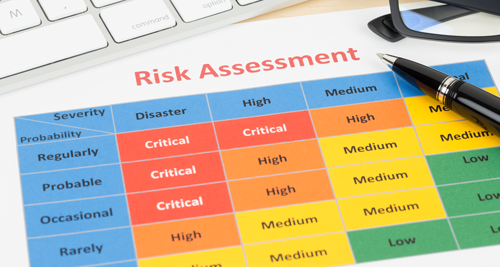Upgrading your EMS to ISO 14001:2015
Many readers may be upgrading their environmental management system (EMS) to the ISO 14001:2015 standard. This article aims to present a summary of the main new requirements and some guidance as to how these might be satisfied.
Context of the organisation (clause 4.1)
Identify important issues that affect your ability to manage environmental issues (eg. ability of the environment to absorb impacts, local issues, your organisation culture). These can be documented as a separate “context” document; perhaps file it with the environment policy.
Interested parties (4.2)
Include as interested parties any who “perceive themselves to be affected by” your activities and have communicated this to you (eg. local community, neighbours, interest groups, employees).
Expand Register of interested parties to include all such parties and list the needs and expectations they have made known to you. Related post: What are the “interested parties” requirements?
Top management responsibilities (5.1)
Top management may delegate duties, but will always retain accountability for the EMS’s effectiveness. Top management responsibilities should be documented and signed off by the top manager onsite. Related post: The Role of Top Management

Integration into business systems (5.1)
Ensure the environment policy and objectives reflect the organisation’s strategic directions and context, and integrate the EMS with other business processes. Top management needs to lead change, and progress needs to be reviewed in the Management Review (9.3).
Environment policy (5.2)
Ensure the policy reflects the organisation’s purpose, context, impacts and any “specific commitments”. Also, ensure it commits to “protecting the environment”, not just preventing pollution.
Risks and opportunities (6.1)
Include your opportunities along with your risks. Opportunities may include issues not identified as a risk, and can be either site-based or strategic (eg. changing work culture). These opportunities may be included in your Environmental Aspects Register, leaving the risk ranking blank.
Life cycle perspective (6.1.2)
Ensure you look upstream and downstream of the site-based processes for opportunities to influence suppliers, agents and clients (or consider changing to, for example, more environmentally-friendly suppliers).
Life cycle issues can be included in your Environmental Aspects Register either as additional aspects or as opportunities. Related post: What does “life cycle perspective” mean?

Compliance obligations (6.1.3)
Include, as compliance obligations, those needs and expectations of interested parties that you voluntarily decide to adopt. These need to be included in your Register of Legal Obligations if you have one or, if you are an EnviroLaw client, ask us to include them under “Site obligations”. Related post: What exactly are compliance obligations?
Environmental objectives (6.2)
Ensure environmental objectives are measurable, monitored and communicated.
Ensure the Register of Environmental Objectives (or equivalent) includes measurable targets and performance indicators. The resources allocated to these objectives (eg. funding, personnel, materials) and timeframes also need to be documented.
Competence (7.2)
Evaluate competence of staff in environmental roles and retain evidence of that evaluation. This evidence may include qualifications, experience, observation by competent person or formal testing.
Operational controls (8.1)
The design of controls must consider the product (and service) life cycle and ensure that any unintended consequences are addressed. Discussion of these points should be recorded, dated and retained.

Emergency preparedness (8.2)
Provide appropriate information/training on emergency response to interested parties (eg. employees, emergency services, neighbours). This may extend to running joint drills with emergency services and even neighbours. Related post: How to improve Emergency Preparedness
Management review (9.3)
Management reviews are to include (among other things) changes to (a) needs and expectations of interested parties, (b) significant environmental aspects, (c) risks and opportunities, and (d) adequacy of existing resources. The outcome of discussion on these (and other) points need to be recorded and retained. Related post: How to make “Management Review” more effective?
Continual improvement (10.3)
Develop a process so all persons “under the organisation’s control” (including contractors) can contribute to continual improvement. In its simplest form, this might be a suggestions box, but more proactive initiatives might encourage discussion of environmental issues at meetings or offer work time for discussions.